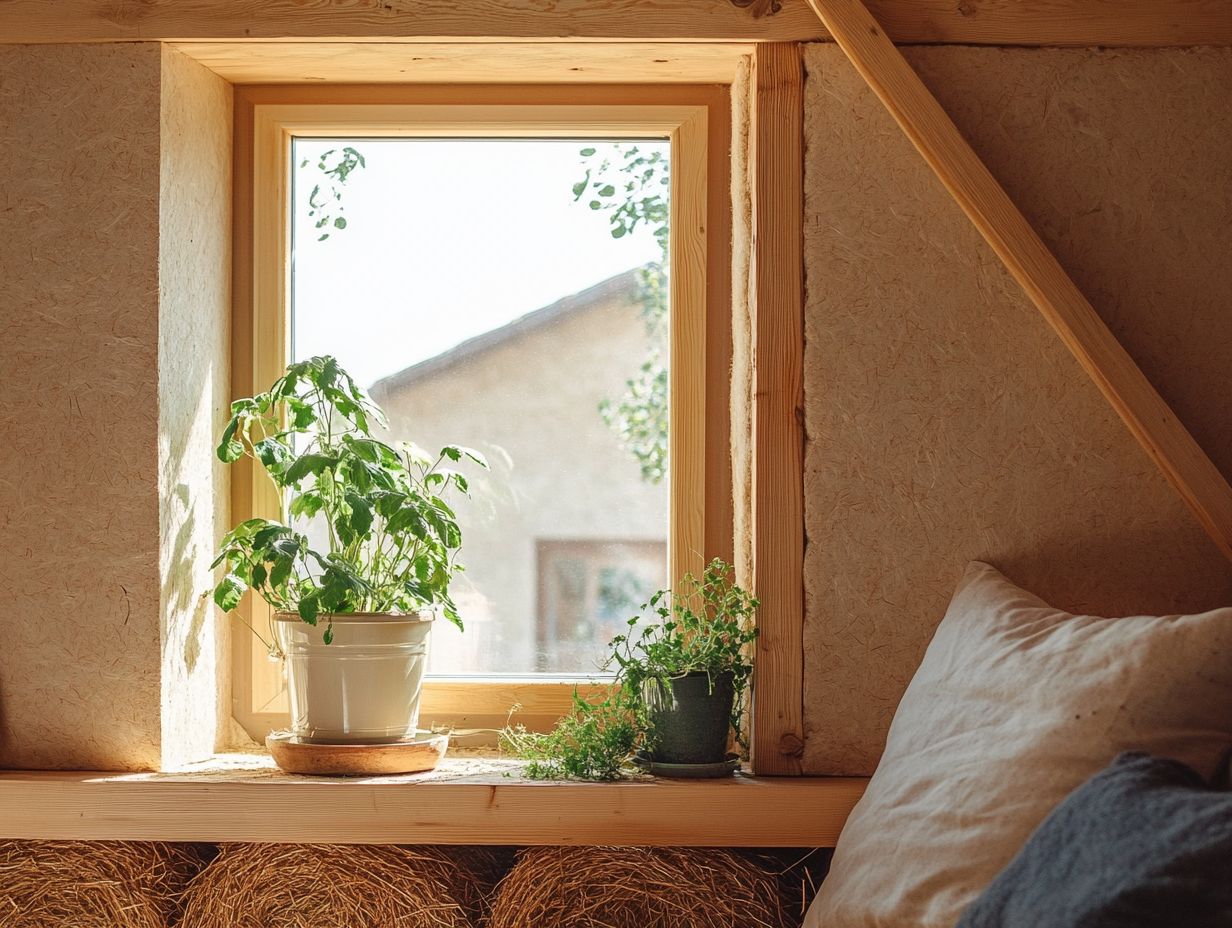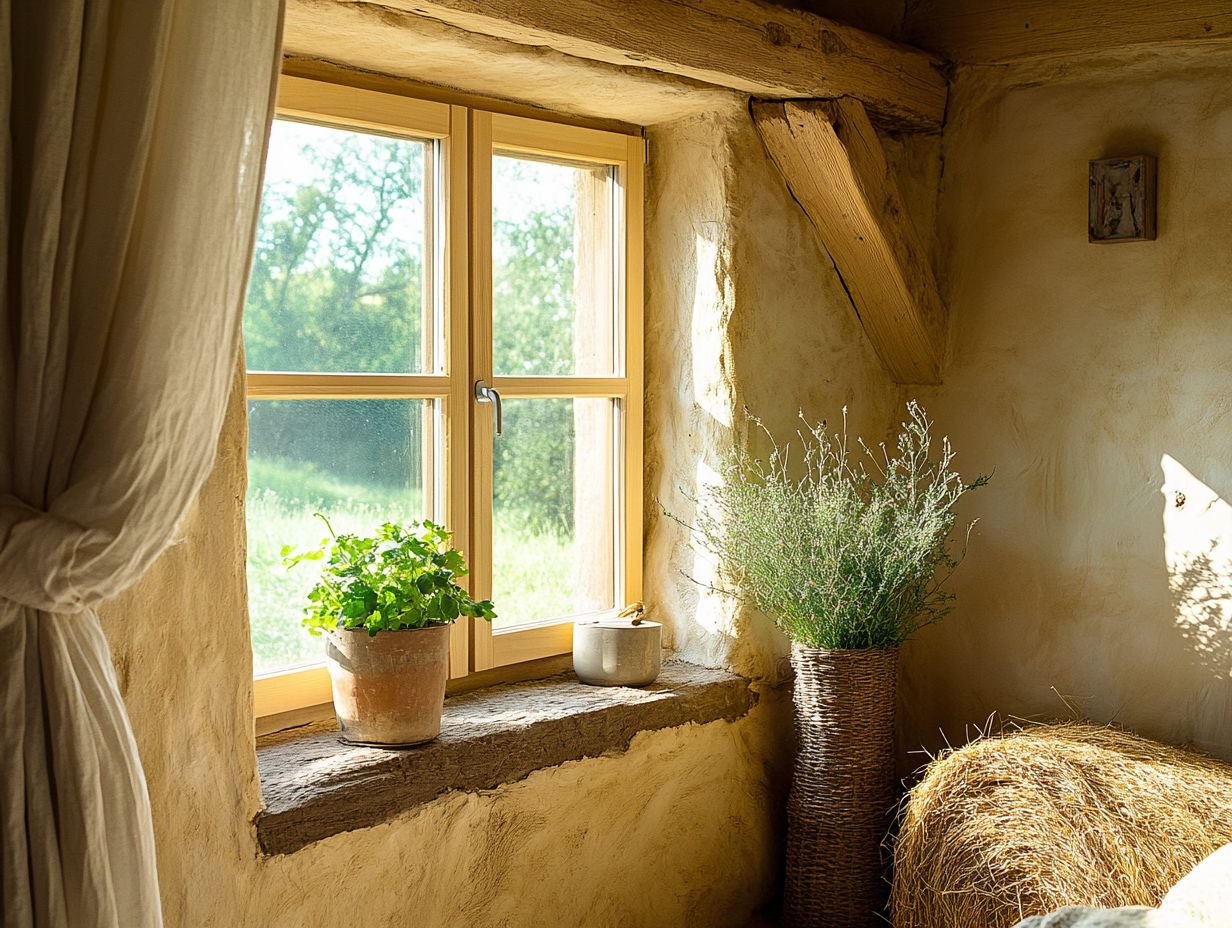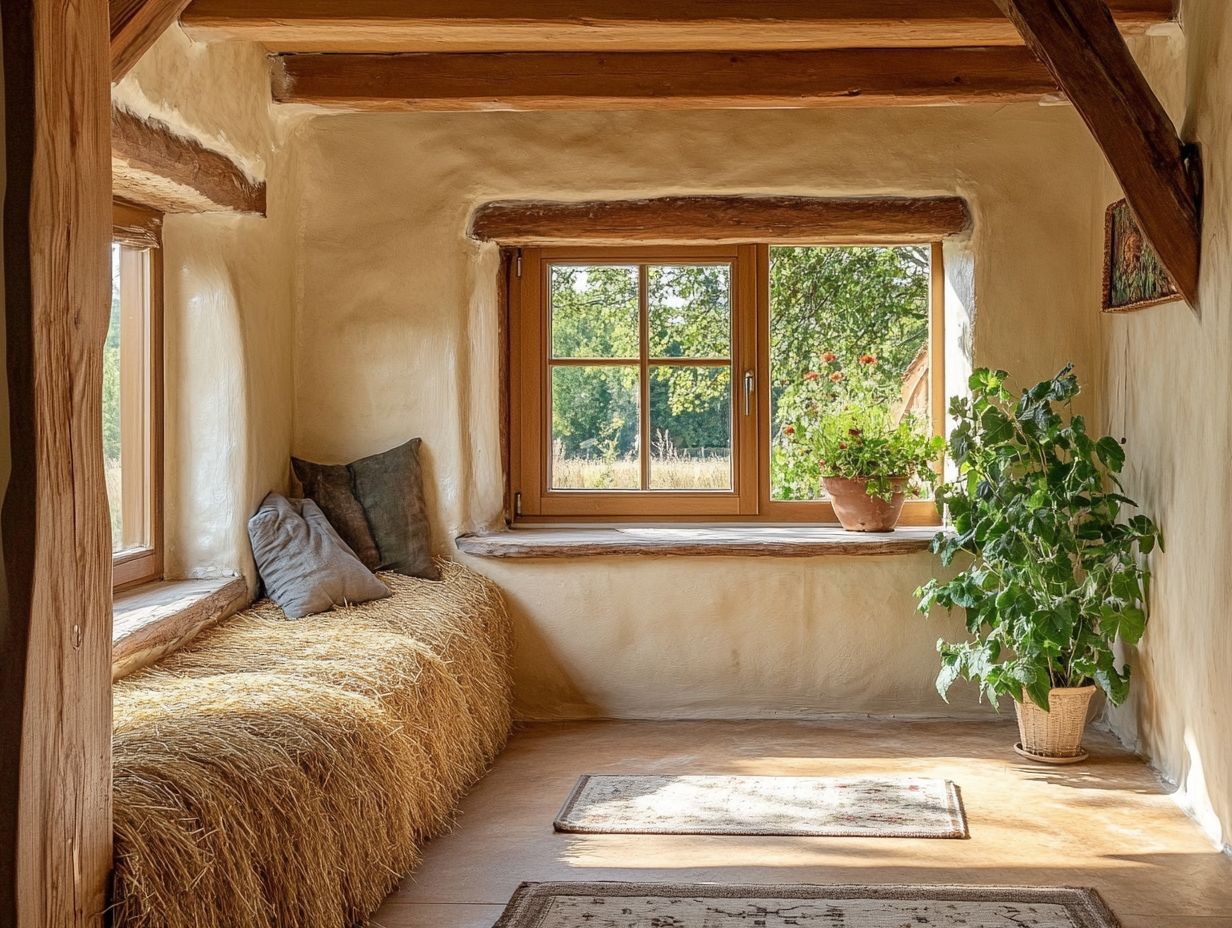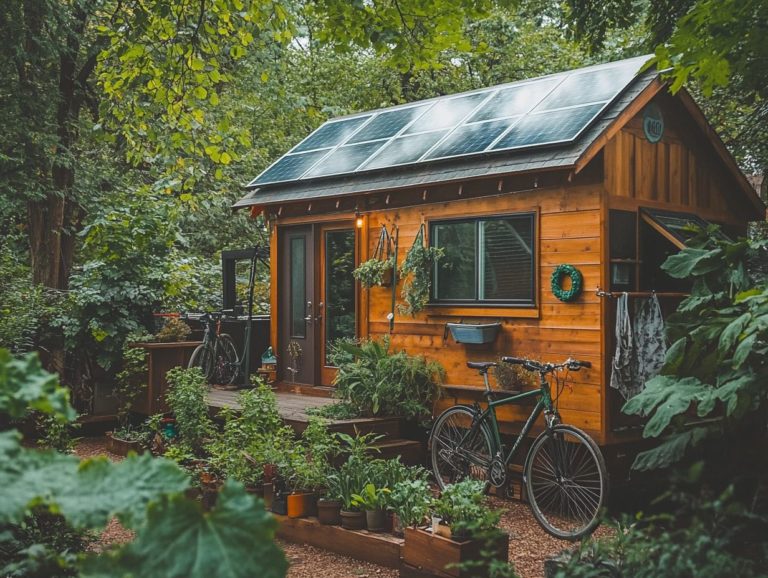The Benefits of Using Natural Insulation Materials
In a world where sustainability is increasingly important, natural insulation materials offer an eco-friendly alternative to conventional options.
This article explores what natural insulation is, the different types available, and the environmental and health benefits it provides. You’ll also learn about the cost-effectiveness of these materials, helping you understand potential long-term savings.
Selecting the right material and learning installation tips are crucial. You’ll find everything you need to navigate this topic, including various insulation options.
Discover how natural insulation can enhance your home and contribute to a healthier planet.
Contents [hide]
- Key Takeaways:
- What is Natural Insulation?
- Advantages of Using Natural Insulation
- Cost-Effectiveness of Natural Insulation
- Choosing the Right Natural Insulation Material
- Installation and Maintenance of Natural Insulation
- Comparing Natural Insulation to Traditional Insulation
- Frequently Asked Questions
- What materials are considered natural insulation?
- What are the amazing benefits of using natural insulation materials?
- Are there any health benefits to using natural insulation materials?
- How do natural insulation materials compare to synthetic materials?
- Do natural insulation materials require special installation methods?
- Can natural insulation materials help save on energy costs?
Key Takeaways:

- Natural insulation materials come from renewable sources like plants and animals. This makes them a sustainable and eco-friendly choice for your home.
- Using natural insulation improves indoor air quality and reduces health risks linked to synthetic materials. It s a healthier option for both people and the environment.
- The initial cost of natural insulation may be higher, but you ll save in the long run. Consider the overall benefits for both your wallet and the environment.
What is Natural Insulation?
Natural insulation includes insulating materials made from renewable resources. This gives you sustainable alternatives to synthetic options. Materials like hemp, wool, cellulose, and recycled cotton are growing in popularity due to their environmental benefits and health advantages.
As people become more aware of environmental issues, both builders and homeowners are turning to natural insulation to improve energy efficiency and enhance indoor air quality.
Definition and Types of Natural Insulation Materials
Natural insulation materials come in many eco-friendly options that enhance the insulating properties of your building while reducing your environmental footprint.
Hemp insulation stands out for its renewable nature and great thermal performance, helping lower energy costs. Wool insulation, sourced from sheep, regulates temperature and naturally resists pests, making it ideal for eco-conscious homeowners.
Cellulose insulation is made from recycled paper, effectively managing moisture and reducing fire risks. Organic materials like cotton or straw offer unique benefits, including biodegradability and soundproofing, ensuring healthier living spaces for you and your family. For those considering these options, explore the best natural insulation options for tiny houses.
Advantages of Using Natural Insulation
The benefits of natural insulation materials extend beyond thermal resistance. These materials significantly enhance energy efficiency and provide important health benefits.
They help reduce buildings’ carbon footprints, promoting sustainability and improving indoor air quality. This creates a healthier living environment for you and those around you.
Environmental and Health Benefits
Natural insulation offers many environmental and health benefits, making it an ideal choice for builders and homeowners.
By choosing materials like wool, cellulose, and cotton, you can enhance air quality while lowering your exposure to harmful chemicals found in synthetic products. These natural options excel in thermal resistance and contribute to a healthier living environment, promoting your overall well-being.
These eco-friendly materials also reduce energy consumption by maintaining comfortable indoor temperatures, which lowers carbon emissions. Choosing sustainable insulation not only benefits your home but helps combat climate change, contributing to a greener planet for future generations.
Explore your options today and make a difference for your home and the planet!
Cost-Effectiveness of Natural Insulation

When assessing the cost-effectiveness of natural insulation, it s crucial to weigh both the initial expenses and the long-term savings. These materials often deliver impressive returns on investment through lower energy bills and reduced maintenance costs.
Long-Term Savings and Return on Investment
Investing in natural insulation can unlock significant long-term savings. These materials enhance energy efficiency and gradually reduce utility costs.
By minimizing the need for heating and cooling systems to run at full capacity, you can enjoy a noticeable drop in your energy bills. For example, a case study from a suburban neighborhood showed that homes using cellulose insulation experienced nearly a 30% reduction in HVAC energy consumption compared to those with traditional insulation.
In another instance involving a commercial building, the initial investment in natural insulation paid off impressively. The costs were recouped within just three years due to ongoing savings. These real-world examples highlight how making the switch not only fosters a sustainable lifestyle but also brings substantial financial rewards.
Benefits of Natural Insulation:
– Lower energy bills
– Reduced maintenance costs
– Quick payback period
Choosing the Right Natural Insulation Material
Choosing the right natural insulation material is essential for optimizing insulation benefits. Several factors must be considered to ensure a perfect match for your specific building designs and insulation needs.
Factors to Consider
When selecting natural insulation, consider various factors, including building regulations, the installation process, and comfort levels to ensure optimal performance. Make sure the insulation meets local rules and fits well in your building.
These elements are crucial for both the efficiency of the material and its long-term sustainability and safety. Performance metrics like R-value a measure of how well insulation resists heat flow determine thermal resistance, directly affecting energy efficiency. Different installation techniques can vary significantly between materials, influencing both overall effectiveness and ease of application.
Adhering to local building codes is essential, as these dictate permissible materials and the standards they must meet to maximize safety and energy conservation.
Installation and Maintenance of Natural Insulation
The installation and maintenance of natural insulation materials are essential processes requiring adherence to best practices. This commitment ensures long-lasting performance and effectiveness in your space.
Best Practices and Tips

Implementing best practices during the installation and maintenance of natural insulation can significantly enhance its effectiveness and longevity, especially concerning your HVAC system.
When applied correctly, natural insulation, including materials like hemp and wool, boosts energy efficiency and harmonizes beautifully with your HVAC system, ultimately lowering overall operational costs. To achieve optimal performance, evaluate the specific needs of your space before installation to ensure the insulation fits seamlessly. Considering the top 5 eco-friendly insulation options can also help you make informed choices for sustainable living.
Regular inspections are a smart move as they help identify common pitfalls like moisture buildup or pest infiltration that could compromise the insulation’s integrity. Consulting with reputable service providers can offer expert guidance on techniques that maximize durability, such as air sealing and ventilation adjustments. This leads to a more comfortable living environment and contributes to a greener, more eco-friendly home.
Comparing Natural Insulation to Traditional Insulation
Comparing natural insulation to traditional insulation reveals a range of advantages and disadvantages that can significantly impact the decision-making process for both builders and homeowners.
Pros of Natural Insulation:
– Environmentally friendly
– Better thermal performance
– Potential for long-term savings
Cons of Natural Insulation:
– Higher initial costs
– Variable availability
– Requires careful installation
Pros and Cons of Each Option
When weighing the pros and cons of natural versus traditional insulation, consider factors like environmental impact, cost, and unique benefits of each type.
Also, reflect on installation processes, maintenance needs over time, energy efficiency ratings, and potential health effects.
Natural materials like cellulose or wool often provide superior breathability. This can significantly enhance indoor air quality an advantage for health-conscious homeowners.
On the other hand, traditional options such as fiberglass or foam board usually have lower upfront costs. They may also offer higher R-values, which is a measure of insulation’s effectiveness in keeping heat in or out, leading to better energy conservation.
However, installing these conventional materials can be complex. Regular maintenance is often necessary to prevent issues like moisture retention or mold growth.
Frequently Asked Questions
What materials are considered natural insulation?
Natural insulation materials are made from renewable, natural resources such as wool, cotton, hemp, and cellulose. These materials insulate buildings and help reduce heat loss.
What are the amazing benefits of using natural insulation materials?

Natural insulation materials have several benefits, including being environmentally friendly, non-toxic, and sustainable. They also boast excellent thermal and acoustic properties, are breathable, and help regulate indoor humidity.
Are there any health benefits to using natural insulation materials?
Yes, natural insulation materials are non-toxic and do not emit harmful chemicals into the air. This can improve indoor air quality and reduce the risk of respiratory issues or allergies.
How do natural insulation materials compare to synthetic materials?
Natural insulation materials have better thermal resistance and moisture control compared to synthetic materials. They are also more sustainable and have a lower carbon footprint.
Do natural insulation materials require special installation methods?
No, natural insulation materials can be installed using similar methods as synthetic materials. However, it’s important to consult the manufacturer’s instructions for specific guidelines.
Can natural insulation materials help save on energy costs?
Yes, natural insulation materials can help reduce heat loss, resulting in lower energy costs for heating and cooling a building. They also have a longer lifespan compared to synthetic materials, reducing the need for frequent replacements.






